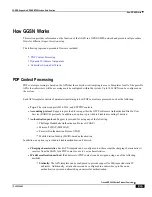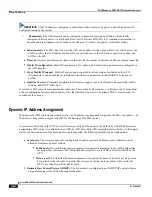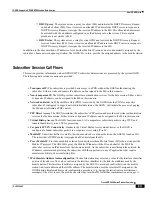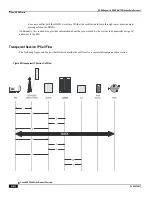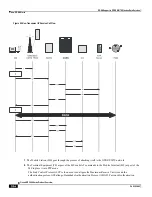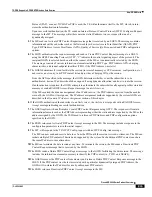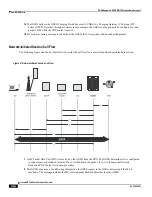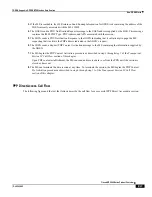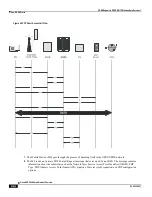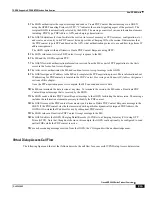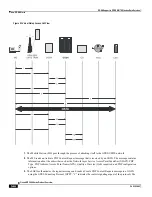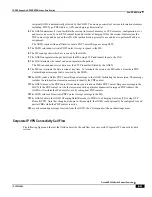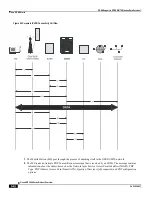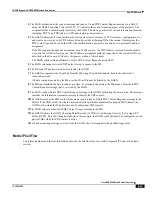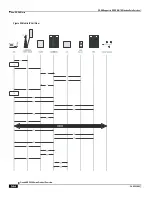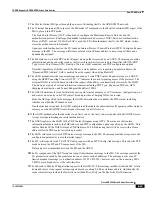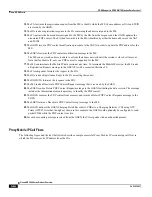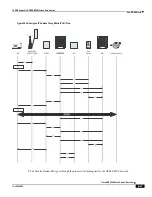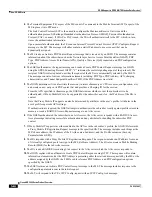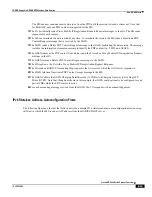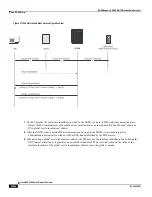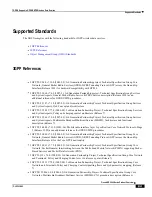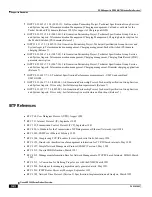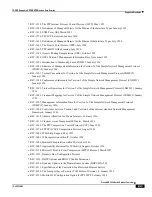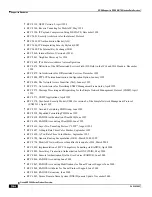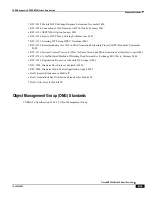
GGSN Support in GPRS/UMTS Wireless Data Services
How GGSN Works ▀
Cisco ASR 5000 Series Product Overview ▄
OL-22938-02
3.
The SGSN authenticates the request message and sends a Create PDP Context Request message to a GGSN
using the GPRS Tunneling Protocol (GTPC, ―C‖ indicates the control signaling aspect of the protocol). The
recipient GGSN is automatically selected by the SGSN. The message consists of various information elements
including: PDP Type, PDP Address, APN, and charging characteristics.
4.
The GGSN determines if it can facilitate the session (in terms of memory or CPU resources, configuration, etc.)
and creates a new entry in its PDP context list and provides a Charging ID for the session. It determines the
PDP context type and based on the APN, what authentication protocol to use and how to perform IP address
assignment.
If the MS required the dynamic assignment of an IP address (i.e., the PDP Address received from the mobile
was null), the GGSN will assign one. The IP address assignment methods supported by the system GGSN are
described in the
Dynamic IP Address Assignment
section of this chapter.
The GGSN replies with an affirmative Create PDP Context Response using GTPC.
5.
The SGSN returns an Activate PDP Context Accept response to the MS.
6.
The MS sends IP packets which are received by the GGSN.
7.
The GGSN encapsulates the IP packets from the MS using IP-in-IP and tunnels them to the subscriber‘s
corporate network.
All data sent and received by the MS over the IP-in-IP tunnel facilitated by the GGSN.
8.
The MS can terminate the data session at any time. To terminate the session, the MS sends a Deactivate PDP
Context Request message that is received by the SGSN.
9.
The SGSN sends a Delete PDP Context Request message to the GGSN facilitating the data session. The message
includes the information elements necessary to identify the PDP context.
10.
The GGSN removes the PDP context from memory and returns a Delete PDP Context Response message to the
SGSN. If the PDP context was the last associated with a particular dynamically assigned PDP Address, the
GGSN will re-claim the IP address for use by subsequent PDP contexts.
11.
The SGSN returns a Deactivate PDP Context Accept message to the MS.
12.
The GGSN delivers the GGSN Charging Detail Records (G-CDRs) to a Charging Gateway (CG) using GTP
Prime (GTPP). Note that, though not shown in this example, the GGSN could optionally be configured to send
partial CDRs while the PDP context is active.
13.
For each accounting message received from the GGSN, the CG responds with an acknowledgement.
Mobile IP Call Flow
The following figure and the text that follows describe the call flow for a successful Corporate IP Connectivity data
session.
Содержание ASR 5000 Series
Страница 1: ......
Страница 26: ......
Страница 48: ...New In Release 10 0 SCM Features Cisco ASR 5000 Series Product Overview OL 22938 02 ...
Страница 50: ......
Страница 58: ......
Страница 67: ...Product Service and Feature Licenses Default Licenses Cisco ASR 5000 Series Product Overview OL 22938 02 ...
Страница 68: ......
Страница 126: ......
Страница 138: ......
Страница 146: ......
Страница 218: ......
Страница 236: ......
Страница 356: ......
Страница 374: ......
Страница 422: ......
Страница 496: ......
Страница 572: ......
Страница 654: ......
Страница 700: ......
Страница 726: ......
Страница 784: ......
Страница 816: ......
Страница 839: ...Network Address Translation Overview How NAT Works Cisco ASR 5000 Series Product Overview OL 22938 02 ...
Страница 841: ...Network Address Translation Overview How NAT Works Cisco ASR 5000 Series Product Overview OL 22938 02 ...
Страница 844: ......
Страница 906: ......
Страница 926: ......
Страница 942: ......
Страница 943: ...Cisco ASR 5000 Series Product Overview OL 22938 02 Chapter 30 Technical Specifications ...
Страница 966: ......
Страница 967: ...Cisco ASR 5000 Series Product Overview OL 22938 02 Chapter 31 Safety Electrical and Environmental Certifications ...
Страница 972: ......

